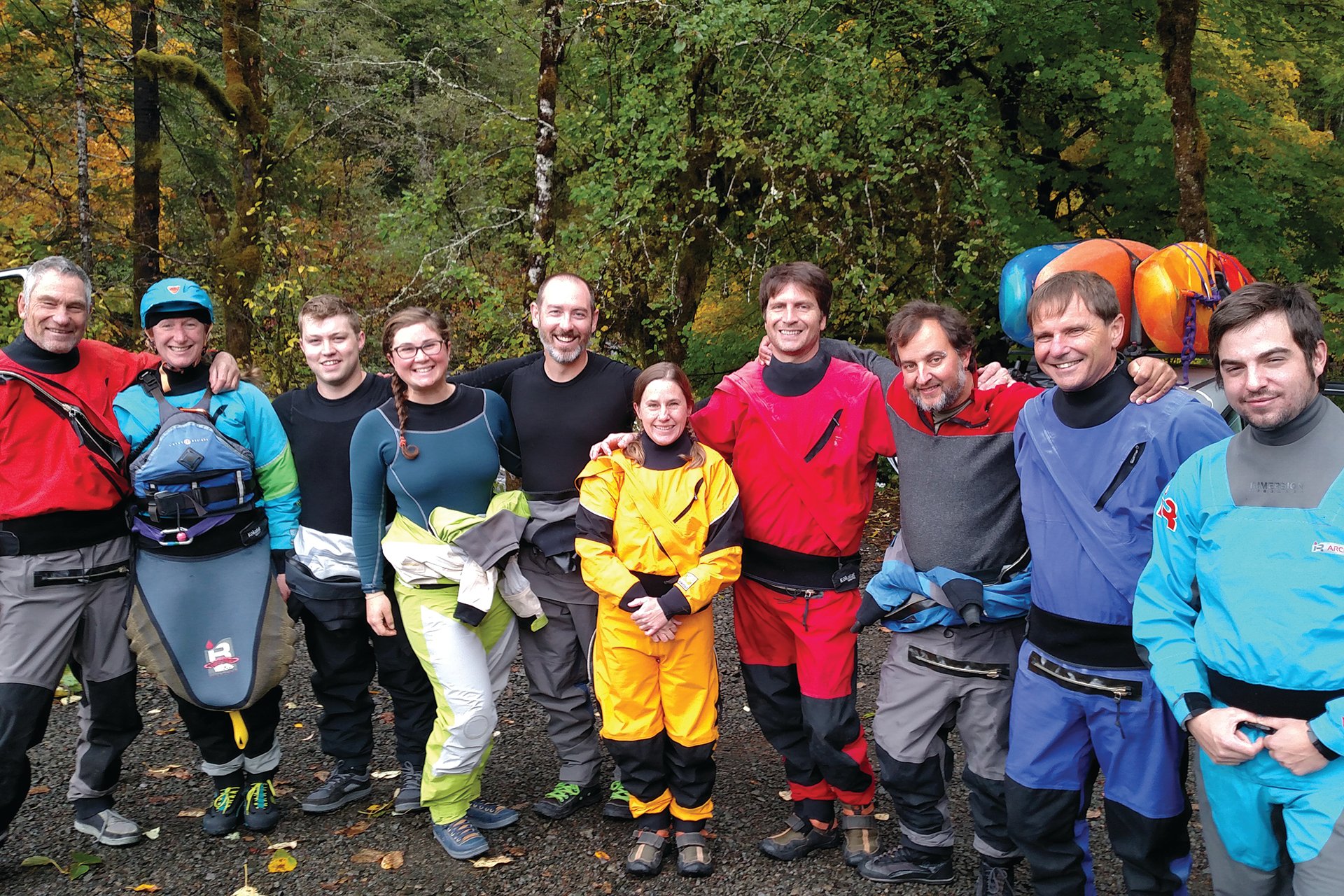
Safety Talk – The Human Factor
Safety Editor’s Note – Teresa Gryder is a former river guide and a whitewater paddler with decades of experience. For the past few years, she's been writing and creating safety-focused events for the Lower Columbia Canoe Club. Her work is so impressive that I invited her to share her ideas in a regular column for the American Whitewater Journal. Welcome, Teresa; AW readers, enjoy. You are in for a treat!
-Charlie Walbridge, AW Safety Editor
This column is about river safety. The topic that has captured my interest lately is how we make decisions. Humans are more intuitive and less rational than we like to admit. We make default “decisions” all the time without even knowing it.
Heuristics is a fancy word for mental shortcuts. When you don’t think too hard about a choice, you’re using heuristics. It’s an unconscious process, it’s quick, and it usually gets good results. About 90% of our processing power is unconscious. When we’re in a new situation, we usually use what worked in a similar situation and keep going. If we don’t know how to deal with new information, we ignore it and keep going. When heuristics lead you down the wrong path and you don’t consciously realize it’s a mistake, you’re in a heuristic trap. Most of the time you get away with it, but sometimes you pay dearly.
I’m human too. I’ve made just about every bone-headed mistake in the book, yet somehow I’m here to share my experiences. I’m going to tell you a tale from back when I still thought I knew everything and wasn’t so prone to thinking.
At the time this story takes place, I lived in Flagstaff, Arizona. While it’s the typical jumping-off spot for Grand Canyon trips, there aren’t many other rivers around. Flagstaff sits at 7,000 feet on the side of a volcano. I was teaching kayaking in the swimming pool to a couple of girlfriends at the time, but they wanted to get on a real river. Being a lifelong river person, I wanted to take them.
My friend Cynthia had a boyfriend named Danny who she said was a boater. He had tanned bulging muscles, a playboat and sparkly helmet. He sounded like a boater. We teamed up to take my two girlfriends and a teenage son down the river. I thought that Danny would help me keep them safe.
We decided to run the San Juan from Sand Island to Mexican Hat. It’s a 27-mile Class II run with a 20-mile shuttle. We thought we could do it in a day. I had done that section before as part of a longer trip and it had been a snooze.
I remember walking out on the Highway 163 bridge to look at the river and hearing Dina say “It looks really high.” It did, but I reassured her “that’s a narrow spot” and most of the river is wider and not so boily. We continued on to Sand Island. While unloading we saw a giant tree float by with branches whipping. Dina was worried about the flow. I was more worried about not having a permit but we walked right past the ranger and the rigging rafts and shoved off.
We did all right, but it was stressful. We had a couple of swims and the flows were high enough that it took a long time to get people and boats to shore and put back together, but we had no injuries or lost equipment. Dina flipped over and did her first, and last, combat roll. Danny turned out to be an advanced beginner, barely keeping the playboat upright in splashy Class II. Needless to say, he was no help in the rescues.
We made it to the take-out at dusk, dead tired. Neither of my girlfriends ever went on the river again. We are still friends, but I lost some of their trust. Danny and his muscles got dumped.
I fell into three main heuristic traps that day: the Expert Halo Trap, the Familiarity Trap, and the Commitment Trap. There are many more traps but these are common ones. The Expert Halo Trap is trusting someone, potentially with your life, when they may not be able or interested in looking out for you. I trusted Danny. My girlfriends trusted me. Those were mistakes.
The Familiarity Trap is when you expect a river (or anything else) to behave the same way it has in the past. Rivers are notoriously changeable, and yet I fell for the expectation that the San Juan wouldn’t be much different. I was wrong.
The Commitment Trap is refusing to change course when circumstances (like higher-than-expected water) indicate a revision to your plan. In this case we launched on a flooding river with a pack of beginners. We should not have launched. That we got away with it does not make it a smart decision. I’ll write more about this in a future missive.
So, if you get that uneasy feeling that you might be making a bonehead mistake, Stop and Think! By taking the time and mental energy to get analytical about your choices, you can make better ones, and perhaps avoid a situation you could live to regret.
To view our recent discussion about The Human Factor online, visit
https://www.lowercolumbiacanoeclub.org/calendar-of-events/the-human-factor
All humans, no matter how intelligent or good-looking, are susceptible to bias and
fallacy.
Photo by Tony Shaw.
Evan Stafford
Fort Collins, CO 80524
